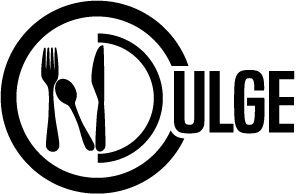Restaurant Chaos Solutions: How to Fix What’s Silently Costing You Profit
- Admin
- Apr 30
- 4 min read

Chaos isn’t just stressful — it’s expensive.
Every missed ticket, delayed table turn, miscommunication, and shift scramble quietly drains your margins.Guests feel it. Staff feel it. Your bottom line definitely feels it.
But chaos isn’t inevitable.It’s a symptom — of missing systems, inconsistent leadership, and unclear expectations.
The best-run restaurants don’t fight chaos during the rush.They prevent it before the doors open — through daily preparation, leadership habits, and operational systems that create calm, clarity, and consistency.
In this blog, we’ll break down why chaos costs more than you think — and introduce proven restaurant chaos solutions that protect your profits, your people, and your guest experience.
How Chaos Eats Your Profits
When chaos hits your restaurant floor, the cost isn’t always obvious — but it’s always there.
Missed upsells. Slower table turns. Guest dissatisfaction. Staff burnout.All of it silently erodes your financial performance.
Here are just a few ways chaos eats into your margins:
A distracted FOH team misses opportunities to feature high-margin specials, sell appetizers, or suggest desserts — shrinking your average check size.
Disorganized service slows table turnover, resulting in fewer covers per shift — and fewer dollars in the drawer.
Longer wait times and inconsistent guest experiences lead to lower tips, bad reviews, and reduced repeat visits.
Staff burnout escalates when every shift feels like survival mode, increasing costly rehiring and retraining cycles.
Miscommunication between FOH and BOH results in ticket errors, comps, and food waste — direct hits to your bottom line.
But chaos doesn’t stop in the dining room — it seeps into the back office too.
When managers are stuck in reaction mode, operational breakdowns become the norm:
Over-ordering or under-ordering inventory because par levels aren’t reviewed against actual sales trends.
Inventory sitting too long, increasing spoilage and tying up cash flow — or running out during peak service.
Labor schedules based on habit or fear, not on projected sales or trends.
Every unnecessary order, every overstaffed shift, every small mistake adds up.And over time, those small cracks turn into major financial leaks.
Without systems in place to create calm, chaos will keep writing your financial story — one preventable mistake at a time.
Why Systems Create Calm (Not Hope)
Chaos doesn’t fix itself.And hope isn’t a strategy.
The most profitable restaurants aren’t lucky — they’re led by operators who understand that systems create stability, clarity, and accountability.
When daily operations are built on repeatable, intentional systems, your team knows exactly what to do before the first guest walks through the door.Everyone — from prep cook to server to GM — is working from a playbook, not reacting in real time.
Here’s what calm through systems actually looks like:
Pre-shift meetings: Every team member understands the day’s priorities, specials, station assignments, and service goals before the rush begins. Each pre-shift focuses on no more than three clear service goals — simple, actionable, and achievable.
Accurate inventory systems: Ordering isn’t based on a hunch — it’s driven by historical sales, usage rates, and par levels reviewed weekly.
Labor scheduling based on projections: Staffing decisions are made using data — not fear, not tradition.
Daily service standards and checklists: Sidework, service flow, and cleaning routines are clearly defined, eliminating friction during peak service.
Visible, present leadership: Managers aren’t stuck behind a desk or buried at expo. They’re on the floor — coaching in real time, spotting friction before it becomes fire.
Systems create clarity.Clarity builds consistency.And consistency — day after day — builds a reputation for reliability, guest satisfaction, and operational efficiency.
Without systems, chaos becomes the default.With systems, calm becomes the culture.
Restaurant Chaos Solutions That Build a Calm-First Culture
Daily systems prevent chaos — but lasting calm is built through culture.
It starts with consistent leadership and is sustained through team-wide engagement and structure.
Here’s how high-performing restaurants embed calm into their culture:
Daily pre-shift focus: Managers deliver short, intentional meetings every shift. These meetings reinforce service priorities, assign roles, and address any changes. Each one includes no more than three clear goals for that day’s service.
Weekly team reviews: Operators debrief wins and friction points weekly, looking for incremental improvements before small issues become big ones. The goal? Get 1% better every day.
Quarterly hospitality workshops: Front and back-of-house teams align around hospitality standards, guest engagement, and culture-building — not just technical training.
Sales and upselling seminars: FOH teams practice guest-driven selling, increasing PPA through features, emotional hooks, and storytelling.
BOH menu deep-dives: Chefs review specials, seasonal items, and prep changes regularly, so the team is always informed and confident in execution.
At NDulge, we design restaurant chaos solutions that reduce friction, improve daily flow, and empower leadership to operate from clarity—not crisis. These systems aren’t theory—they’re built from decades of real-world operations experience.
Calm isn’t just the absence of chaos — it’s the presence of leadership, preparation, and accountability.
Chaos happens when people are left guessing.Calm happens when people are trained, informed, and led.
Ready to Replace Chaos with Calm?
Chaos isn't a badge of honor — it’s a silent killer of profits, guest loyalty, and team morale.
If your restaurant feels like it’s constantly reacting instead of leading, it’s time to build systems that protect your margins and strengthen your culture — one shift at a time.
At NDulge Restaurant Consulting, we help operators build the structures, training frameworks, and leadership rhythms that create calm, drive consistency, and deliver results.
Ready to build a team that runs calm, not chaotic? Let’s talk.







Comments